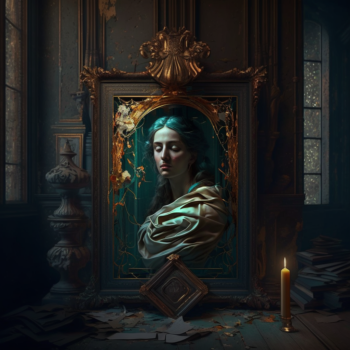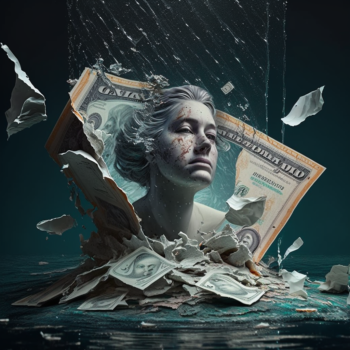This article explains what is the value of art and how it works in the art world. Art is valued for its emotional and social importance, as well as its technical and aesthetic qualities. Value in art can be determined by a number of different factors, including color, light, and composition.
It is not uncommon for art experts to disagree on what constitutes a work of art, or what its value is. Art is often seen as an expression of an individual’s values and beliefs, and works can be valued differently depending on the viewer’s opinion. Artists want their artwork to be appreciated by others, but also to have financial value. In some cases, artwork is stolen or damaged and it can be difficult to calculate its measure of value. In general, art provides a brief overview of the world’s values and beliefs.

What Is The Value Of Art?
It is a market where aesthetic concerns, light, and subjective issues come into play. The economic art market has been established to justify artwork prices. Artworks have both social and intrinsic value, but the price of an artwork can be determined by the buyer based on commercial value, leaving out investment aspect. Gold has a low intrinsic value, yet its price is determined by many factors such as its color and purity. An artwork made for utilitarian purposes does not hold much value compared to a piece made for personal expression. Thus, when purchasing art there are many aspects that must be considered such as the artist’s reputation, condition of the work, material used and the subject matter in order to make a justified purchase. Art cannot be measured in terms of monetary value alone because it holds more than just an economic aspect; it has an emotional one too.
Art passes ideas and values, provides insight into society and evokes feeling. The process of creating art, whether it be with paint, pencil or paper, is one that is deeply emotional and can be used as a way to vehiculate ideas which are otherwise difficult to express. Art can also provide the opportunity for critical discussions and debates concerning values, ideas and concepts. It has the ability to communicate with viewers on a much deeper level than words alone ever could; by connecting feeling with memory. Ultimately, art has an immeasurable value because it allows us to share our thoughts and feelings in a way that not only encourages positive dialogue but also deepens our understanding of ourselves and the world around us.
Art has the power to bring light to dark objects and dark to light objects, giving meaning and order to a world that can often seem chaotic. Art is the very essence of society, it’s what makes us unique and what allows us to express ourselves. Art can be seen in paintings, photographs or even in light paintings.
What Is The Value Of Art?

It can be seen in watercolour painting, where delicate colours are used to give a gentle appearance. It can also be seen in your own artwork, where light and dark values are used to create harmony. Imagining many art sources helps to better understand the key elements of art works. This could include imagining a grayscale gradient, which can help create a better understanding of how an artist is able to use colours in their work.
The use of colour theory is necessary to illustrate artistic manipulation of tint and how the artist is able to describe various shades, tones and hues. Colour theory involves understanding the lightest and darkest elements of a certain shade, and how it can be used to create an illusion in space by using the seven elements of hue, chroma, value, tone, tint, shade and intensity. For example, a lighter tone or tints can be used to create an overall lighter effect in a work of art. Similarly, dark tones or shades can be used for darkening elements. This gives closer understanding of how an artist is able to use these lightest and darkest tones in order to create contrast within their work. Art has always been held high in terms of quality and value; its ability to convey stories through imagery without words makes it a powerful form of communication.

What Is The Value Of Art?
It can highlight shadows and add visual depth to a piece, while elements like color, light and contrast add more meaning to the work. Art adds value by giving visual depictions of things that cannot be expressed through words alone. Through art we can create illusions of space and atmosphere; it also helps us to see things in different perspectives. For example, Albrecht Durer’s drawings give us a glimpse into his world by creating the illusion of perspective and space. Art can also add emphasis to certain elements by using strong contrasts in color or high contrast lighting in photography.
It can also draw attention to certain objects by using repeating shapes or complementary colors. The technical aspect of art is important for creating the desired effect, but it is the composition that gives the art piece depth and meaning. By using contrast, balance, proportion and depth an artist can create something that has a greater meaning than just an elementary representation of a single object. Art enthusiasts recognize that the value of an artwork goes beyond its technical aspect, and they look at it from a more philosophical point of view. They are able to appreciate the ritualistic importance behind an artwork as well as its emotional impact on viewers. Enthusiasts also value black-and-white sketches or paintings more highly than those done in color because they believe that there is a higher level of skill required to make them look good.
To understand the value of art, it is important to call more seasoned artists and art experts. Artists galleries are great places to visit to get a sense of the value of art in today’s market. For example, by visiting these galleries, you can see how much certain pieces have been sold for and compare them with similar works. Additionally, even if you have made only a few composition sketches or drawings, you can still hone your skills by mixing accurate values and deciding which artist has done better work. Furthermore, when evaluating a piece of artwork, it is important to evaluate the painting itself as well as arranging lights and darks within it.
What Is The Value Of Art?

A successful painting is one that creates intentional stylistic effects, while creating accurate values. Achieving more accurate values in a painting requires an artist to mix colours and the use of value contrast techniques. The artist has to relate the values together in order to transition between them. Tonal masses are also important in order to create middle values which will help make the artwork look more realistic.
Art purchases are often done through an artist, artist’s dealer or in some cases, directly from the artist. A big first sale is always a great way to see a new artist’s work and to gain more value with it. Impressionist paintings can be very valuable and desirable if the right collector is interested. Paintings from cubist masters can also be quite valuable and even more so when new work comes on the market.
Cited Sources
https://ejazkhanphotography.com/why-art-is-important-to-society/ 6





We are a group of volunteers and starting a brand new scheme in our community. Your site offered us with valuable information to paintings on. You’ve performed an impressive activity and our entire group will probably be grateful to you.
What i do not realize is in reality how you’re no longer actually a lot more neatly-liked than you may be right now. You’re very intelligent. You understand therefore considerably on the subject of this topic, produced me personally believe it from numerous various angles. Its like women and men are not involved until it’s one thing to do with Woman gaga! Your own stuffs excellent. All the time handle it up!